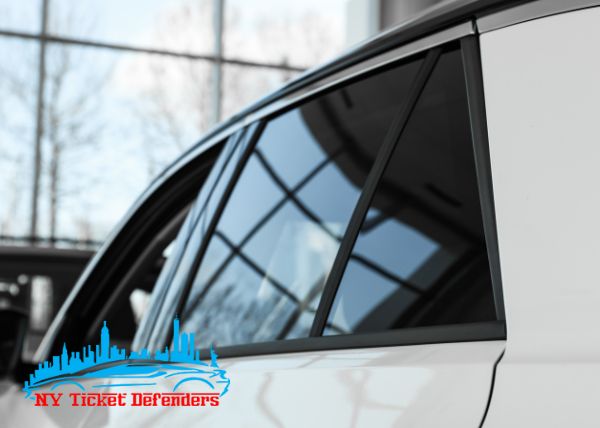The Science Behind Vehicle Window Tinting and UV Ray Defense
The Science Behind Vehicle Window Tinting and UV Ray Defense
Blog Article
Home Window Tinting Regulations and Standards: What You Need to Know Prior To Tinting Your Vehicle
Before waging window tinting for your lorry, it is necessary to familiarize yourself with the varied legislations and standards that control this technique throughout various states. These regulations dictate the permissible degrees of tint darkness, commonly gauged by noticeable light transmission (VLT) percentages, and include specific terms for front windscreens targeted at guaranteeing road security. Furthermore, particular territories may offer medical exceptions for individuals with qualifying problems. Recognizing these complexities can save you from possible lawful implications, however what are the particular rules in your state?
Review of Home Window Tinting Laws
Window tinting regulations are regularly subject to variant across various jurisdictions, showing regional regulations and security considerations. These regulations dictate the acceptable levels of color darkness and reflectiveness on automobile home windows, making sure that chauffeurs keep ample exposure while additionally shielding against dangerous UV rays and heat.
The majority of regulations identify window tinting based upon the Visible Light Transmission (VLT) portion, which suggests the amount of light that can pass through the home window. Usually, lower VLT percents indicate darker tints. Regulations often separate between the front, side, and back windows, with more stringent constraints put on the front windscreen to boost safety and security for both the vehicle driver and other roadway users.
Compliance with home window tinting laws is vital, as offenses can result in penalties, mandatory elimination of the color, and potential rises in insurance policy costs. It is necessary for automobile proprietors to acquaint themselves with regional legislations before proceeding with home window tinting installments.
State-by-State Tint Laws
Understanding the details home window tinting guidelines in each state is crucial for lorry proprietors seeking to abide by the legislation. Each state in the united state has developed its own set of rules regulating window tinting, which can vary significantly. These laws often determine the allowable levels of tint darkness, the kinds of windows that can be tinted, and any clinical exemptions that might apply.
For instance, states like The golden state have strict restrictions on tint darkness for front windows, while others, such as New Mexico, might enable darker colors. Furthermore, specific states mandate details visibility portions for different home windows, including the windscreen, front side home windows, and back windows. It is important for vehicle proprietors to familiarize themselves with their state's regulations to prevent possible fines or charges.
Furthermore, some states might require a certification sticker label to be put on colored windows, showing compliance with state regulations. Failing to follow these laws not just takes the chance of lawful consequences however can additionally impact safety and visibility while driving. Car proprietors should carry out comprehensive study or seek advice from local authorities to guarantee full understanding and compliance with state-by-state tint laws.
Allowed Color Degrees and Types
Numerous vehicle owners might be stunned to learn that enabled tint degrees and kinds differ extensively throughout various states. Each state has actually established its very own laws concerning the allowable darkness and reflectivity of home window tint, often determined by Visible Light Transmission (VLT) portions. VLT describes the amount of light that can pass with the tinted home windows; thus, a reduced percent shows a darker color.

Additionally, the types of tint materials allowed can vary, with some states prohibiting metal or mirror-like finishes. It is vital for lorry proprietors to familiarize themselves with their state's specific legislations to make certain conformity. Non-compliance can result in penalties, obligatory removal of the color, or various other lawful repercussions, making it critical to comprehend these laws before waging setup.
Medical Exemptions for Tinting
While not all states offer allocations for medical exceptions regarding window tinting, those that do acknowledge the need for particular individuals to enhance exposure and comfort discover this as a result of clinical conditions. Various medical conditions, such as lupus, skin cancer, and particular eye problems, can make people especially sensitive to sunlight. Subsequently, these people might need darker tints to safeguard themselves from hazardous UV rays and glow.

It is very important to keep in mind that despite a clinical exception, there may still be restrictions on the level of color allowed. Compliance with state regulations makes sure that people are both safeguarded and within legal limits. Those thinking about clinical exceptions need to call their regional Department of Motor Autos or comparable authority to recognize the procedures and demands needed to request an exemption efficiently.
Fines for Non-Compliance
Stopping working to adhere to home window tinting regulations can lead to significant charges, which differ by state. Police are empowered to issue citations for lorries that do not abide by the specified tinting policies. These charges generally consist of fines, which can vary from small amounts to a number of hundred bucks, depending upon the seriousness of the infraction and the state in inquiry.
In some territories, duplicated offenses may lead to escalating penalties or added charges, such as necessary court appearances. Non-compliance might demand the elimination of prohibited tinting, often at the proprietor's expense. In severe situations, regular offenders may deal with suspension of their car enrollment till conformity is achieved.
In addition, insurance implications might arise look at this site from receiving several citations for home window tint infractions. Insurance firms may view such violations as an indicator of riskier behavior, possibly causing raised costs or problem in protection.
To stay clear of these penalties, it is important for automobile proprietors to familiarize themselves with their local home window tinting regulations and make sure that their lorry complies (Window Tinting). This proactive approach not only prevents legal ramifications yet also advertises road security
Conclusion

Most laws identify window tinting based on the Visible Light Transmission (VLT) percent, which indicates the amount of light that can pass via the window. Compliance with window tinting policies is crucial, as infractions can result in fines, necessary elimination of the color, and prospective boosts in insurance policy premiums.Understanding the certain window tinting regulations in each state is crucial for car proprietors seeking to conform with the regulation. These guidelines commonly dictate the allowed levels of color darkness, the types of windows that can be tinted, and any clinical exemptions that may apply.
For circumstances, states like The golden state have strict limitations on color darkness for front home windows, while others, such as New Mexico, might allow darker colors.
Report this page